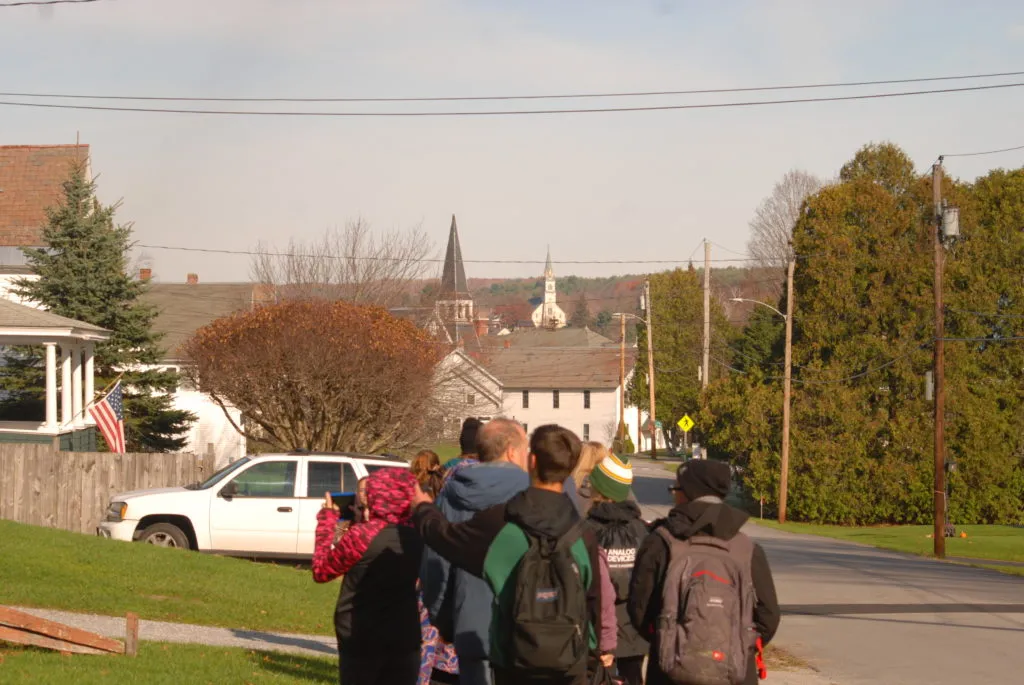There is a reason that we’ve written so many stories about students doing cool projects in and with their communities! Relevant, real world learning experiences are highly engaging for young adolescents.
The learning and work feels meaningful, and youth feel energized with their emerging sense of agency: I can make a difference in my community. Here and now. This matters.
Seriously, there’s no way we can capture them all here in this toolkit, and it’s likely that almost any post makes at least some reference to students engaging with the larger community.
There is a lot of overlap between community-engaged learning and place-based learning, outdoor learning, project-based learning, service learning, negotiated curriculum, and even education for sustainability.
But whatever you call it, when it has the essential ingredients of real world, student driven, making a difference and, crucially, engaging with members and organizations in the local community. Community engaged learning is a huge boon for student students and for communities – it’s a win-win!
How to approach Community Engaged Learning
- Introducing: Asset mapping
- The Successful, sustainable middle school
- A Critical lens on project-based learning
- Interactive map tools for creating deeper place-based learning
Examples of student projects
Meet the Compassionate Faces of the Shires by Jeanie Phillips
- Manchester Elementary and Middle School 5th graders created profiles of compassionate community members. To illustrate, includes video and examples of student work.
Humans of Burke by Katy Farber
- Burke Town School 8th graders spent a semester connecting with community members and creating art to honor them. To illustrate, includes video and examples of student work.
The value of a community mentor by Life LeGeros
- Crossett Brook Middle School’s Brainado project allows an 8th grader to connect with a local mechanic (and parlay it into a summer job!). To illustrate, includes video.
Projects for Hope by Katy Farber
- Burke Town School 8th graders connect with community leaders and use the UN Global Goals to contribute to the community. To illustrate, includes video.
Sixth Graders Revamp the Ville by Life LeGeros
- Lyndon Town School 6th graders participate in a town-wide planning process to improve the community. To illustrate, includes video, lesson plans from teachers, and learning scales.
Who are we as West Rutland? by Emily Hoyler
- West Rutland students in grades 7-8 take an asset and inquiry approach to improving their community. To illustrate, includes student work.
(re)Building community: Breaking bread and stereotypes with formerly incarcerated Vermonters by Jeanie Phillips
- Dorset School 6th graders connected with Dismas of Vermont during a unit about cooking, food, and community.
Connecting students to community in northeast Vermont by TIIE staff
- Burke Town School students in grade 3-5 work to reconnect their community after pandemic school closures. To illustrate, includes video and lesson plans.
Who are the keepers of your town’s history? by Rachel Mark
- Manchester Elementary Middle School 7th graders used oral histories and 3D printing to create mini documentaries about local history. To illustrate, includes description and video.
Lessons learned from a community conversations about race by Life LeGeros
- Students at Harwood Union High School partnered with community members to facilitate a community conversation about the name of a primary school in the district.
Podcast episodes (and transcripts) about Community Engaged Learning
- #vted Reads: Community Schools Blueprint with Kathleen Kesson
- #vted Reads: Place-Based Curriculum Design with Thierry Mugabo Uwilingiyimana
- #vted Reads: Braiding Sweetgrass with Aimee Arandia Østensen
- 21st Century Classroom/#vted Reads: All About Service Learning with Katy Farber
- 21st Century Classroom: What I Learning at the Youth Climate Strike with Emily Hoyler
- 21st Century Classroom: Making history on the radio with Brattleboro Middle School


